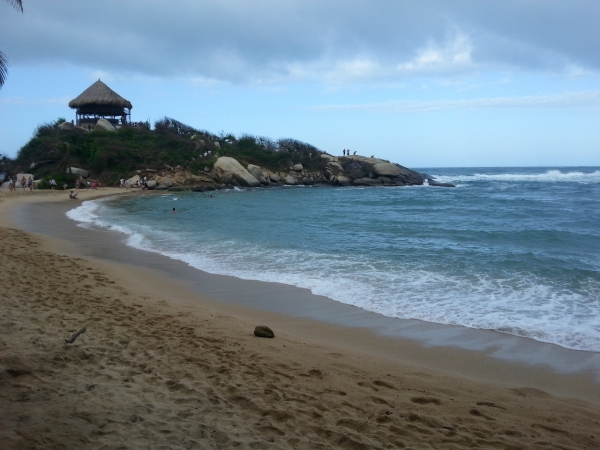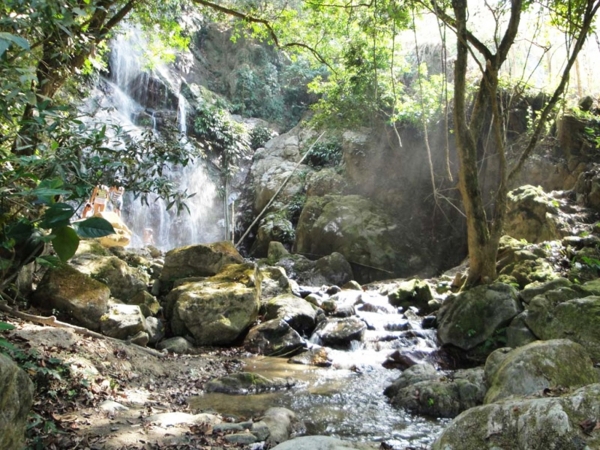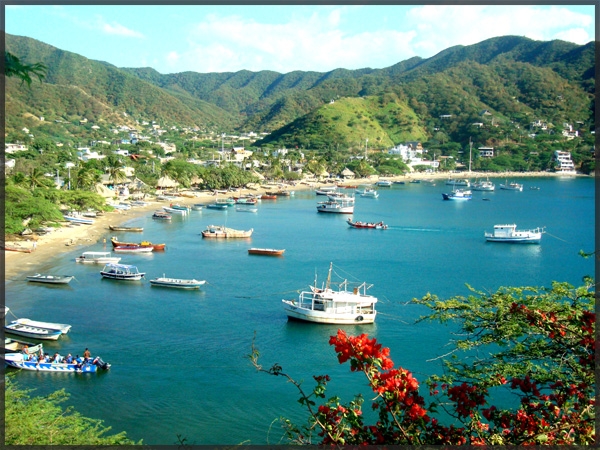Nu pierdeți cele mai bune locuri de muncă!
Abonează-te și săptămânal iți vom trimite un email cu ultimele locuri de muncă disponibile. Introdu adresa ta de email mai jos
Santa Marta is a small Colombian city nestled between the Caribbean Sea and the Sierra Nevada Mountains (famous for boasting the tallest coastal peaks in the world). The city holds a major claim to history as the first Spanish settlement in Colombia (founded in 1525) and for being one of the first Spanish settlements in South America in general. Santa Marta’s historical importance is furthered as the death place of Simón Bolívar, who led many Latin American countries to independence from Spain. Bolívar passed away in Santa Marta in the year 1830, and is highly commemorated there today. The beaches and climate of Santa Marta, coupled with its historical significance, make it a popular destination for Colombians on holiday, but it should also be noted that the city is a haven for foreign expats.
Aside from being a historical place of interest with some nice coastline, there are myriad reasons as to why Santa Marta is a perfect place for expats to settle. The weather in the Santa Marta is warm throughout the year, and a steady breeze from the sea provides a welcome and cooling effect to residents. There are many low cost options for living in Santa Marta, and some opportunities to volunteer in exchange for room and board. The city itself is large enough to explore and get in lost in, but small enough to feel cozy and familiar. Most importantly though, a feature that should immediately stand out to potential expats is that Santa Marta dynamically functions as both a desirable place to reside and a central hub for adventure in the Coastal Caribbean region of Colombia. This blog post will focus on three exciting places around Santa Marta that expats can easily visit as daytrips or longer stays.
Tayrona National Park
Tayrona Park is one of the most visited tourist attractions in the Santa Marta area, and for good reason. The park encompasses 150 square kilometers land, much of which is situated directly on the Caribbean coast (this means beautiful beaches galore). Within the park there are literally thousands of plant and animal species to observe; the park is a popular destination for bird-watchers, as there are over 300 species living within its boundaries. Walking through the park is like listening to a soundtrack of beautiful bird songs. Entrance into the park costs 35,000 pesos (about $17), but if you are a student with a valid students ID and passport the cost is only 7,000 pesos (about $3.50). Expats living in Santa Marta can get to Tayrona Park in less than hour, catching a 7,000-peso shuttle right out of the city center.
PRO TIP: If you want to get the student discount, arrive to the park with a photocopy of your passport and student ID on the same page. This will save you lots of time.
There are multiple campsites within Tayrona, most located near its various beaches, so visitors can stay and explore the park for days on end; the water is refreshing and the swimming is wonderful. Within the various campsites, visitors can rent hammocks or tents to sleep in overnight. Inside the campsites there are a few rustic restaurants and even bars, so if you make the last minute decision to stay longer, you will have access to food and water. Along the park’s trails there are even stalls set up offering delicious street food such as cheesy arepas that are popular to Colombia. Despite the fact there are commercial venues selling food, the park is still peaceful, and there are many areas to find solitude and peace. If you get tired of beaches, there is lots of hiking to be done; you can even make your way up to Pueblito, a once inhabited site of ancient ruins. Tayrona is a picture perfect national park, and one of the many reasons being an expat in Santa Marta is awesome; it’s just a hop, skip and jump away.
Minca
The small town of Minca is tucked away in the foothills of the Sierra Nevada coastal mountains. It is a town of only 500 inhabitants, but has developed a reputation as an “eco-paradise”. Minca is located very close to Santa Marta, but a higher elevation causes its vegetation and climate to be quite different; the area is known for its lush greenery and rainfall. The land surrounding the town has perfect conditions for growing coffee, and visitors can check out coffee farms and plantations to watch the process of coffee bean production. Near to Minca, visitors and can also witness a gorgeous view of Santa Marta and the Caribbean Coast. For an expat living in Santa Marta, one of the biggest draws to Minca is its peaceful, secluded, and serene vibe. It offers an opportunity to get out of the city, relax, and take a dip in the beautiful El Pozo Waterfall. Mina is a place to crank back the dial and chill out.
Getting to Minca, like many other locations around Santa Marta, is as simple as a short bus ride from the city center. Minca is located only 14 kilometers away, and can be reached in well under an hour, making it a great day-trip. There are plenty of tours to Minca that can be arranged in Santa Marta, but those on a tighter budget can also explore it independently. A variety of hostel options are available such as Casa Elemento, which boasts “the largest hammock in Colombia”.
The Village of Taganga
Just north of Santa Marta is the tiny fishing village of Taganga. This little place is a great spot for expats to visit for a number of reasons. There are quite a few nightclubs in Taganga, and the village is known as a hippy-town and party-place. For those living in Santa Marta, it’s easy to get over to Taganga for a fun night out. El Mirador is one good spot to dance the night away, and it’s packed on weekends. For those who are not into partying, or are looking for something different, Taganga is also a perfect spot to get a PADI diving certification for a decent price. There are over ten dive schools in town and the diving nearby is known to be quite scenic. Furthermore, those who enjoy fishing can pay a local to take them out on the water for a chance to catch their dinner.
Getting to Tanganga from Santa Marta is simple. The ride takes only fifteen minutes, and can be reached by cab or bus. The bus to Taganga costs less than 1$, and a cab will run you around $5, which can be easily split among a few friends. Taganga is great for a day trip, or even just a night out, making it an ideal hang out for expats living in Santa Marta.
This post was co-written by Derek Smith and guest blogger Michael Colasurdo.
Sign in to publish a comment



Be the first to comment on this post.